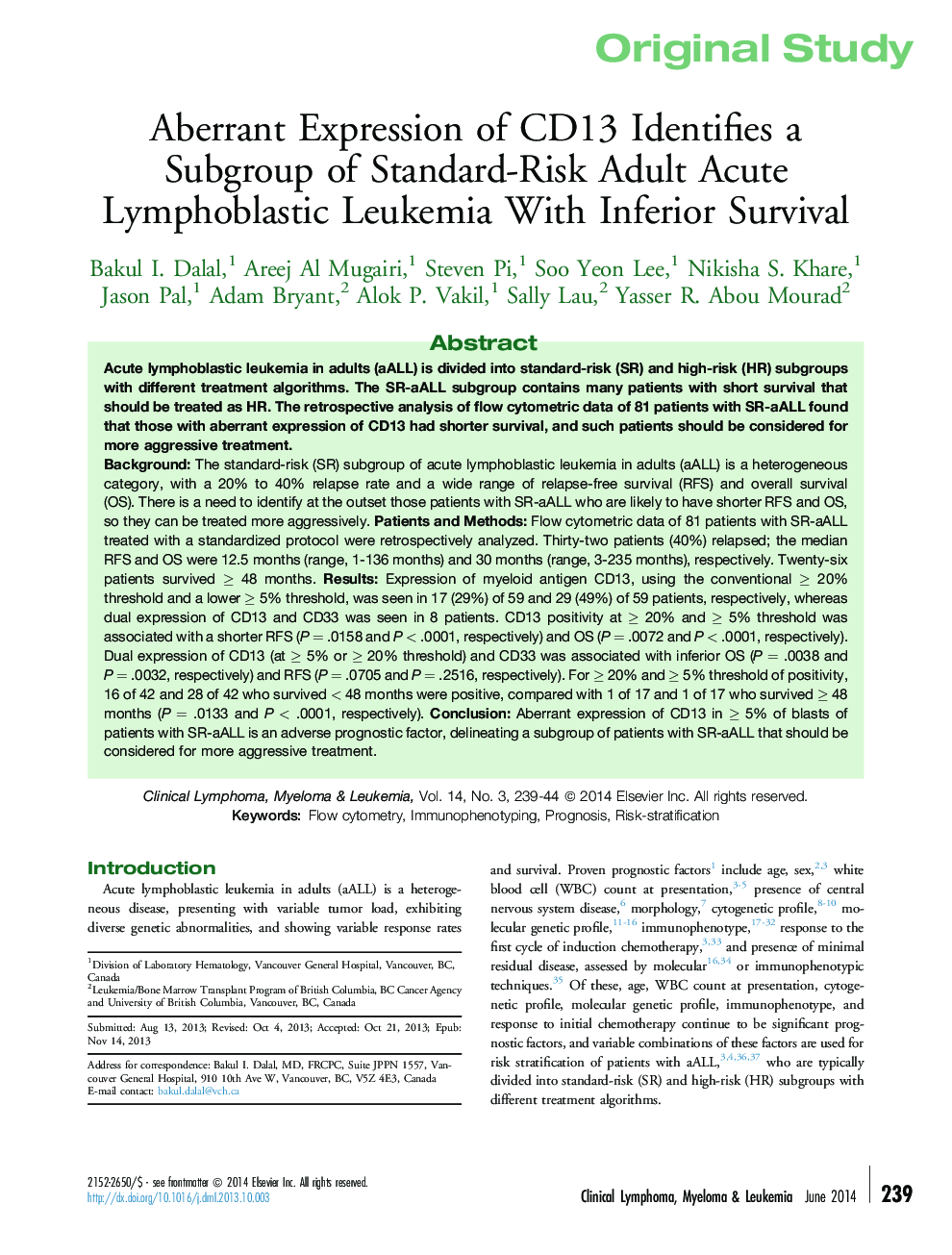| Article ID | Journal | Published Year | Pages | File Type |
|---|---|---|---|---|
| 2754944 | Clinical Lymphoma Myeloma and Leukemia | 2014 | 6 Pages |
BackgroundThe standard-risk (SR) subgroup of acute lymphoblastic leukemia in adults (aALL) is a heterogeneous category, with a 20% to 40% relapse rate and a wide range of relapse-free survival (RFS) and overall survival (OS). There is a need to identify at the outset those patients with SR-aALL who are likely to have shorter RFS and OS, so they can be treated more aggressively.Patients and MethodsFlow cytometric data of 81 patients with SR-aALL treated with a standardized protocol were retrospectively analyzed. Thirty-two patients (40%) relapsed; the median RFS and OS were 12.5 months (range, 1-136 months) and 30 months (range, 3-235 months), respectively. Twenty-six patients survived ≥ 48 months.ResultsExpression of myeloid antigen CD13, using the conventional ≥ 20% threshold and a lower ≥ 5% threshold, was seen in 17 (29%) of 59 and 29 (49%) of 59 patients, respectively, whereas dual expression of CD13 and CD33 was seen in 8 patients. CD13 positivity at ≥ 20% and ≥ 5% threshold was associated with a shorter RFS (P = .0158 and P < .0001, respectively) and OS (P = .0072 and P < .0001, respectively). Dual expression of CD13 (at ≥ 5% or ≥ 20% threshold) and CD33 was associated with inferior OS (P = .0038 and P = .0032, respectively) and RFS (P = .0705 and P = .2516, respectively). For ≥ 20% and ≥ 5% threshold of positivity, 16 of 42 and 28 of 42 who survived < 48 months were positive, compared with 1 of 17 and 1 of 17 who survived ≥ 48 months (P = .0133 and P < .0001, respectively).ConclusionAberrant expression of CD13 in ≥ 5% of blasts of patients with SR-aALL is an adverse prognostic factor, delineating a subgroup of patients with SR-aALL that should be considered for more aggressive treatment.
